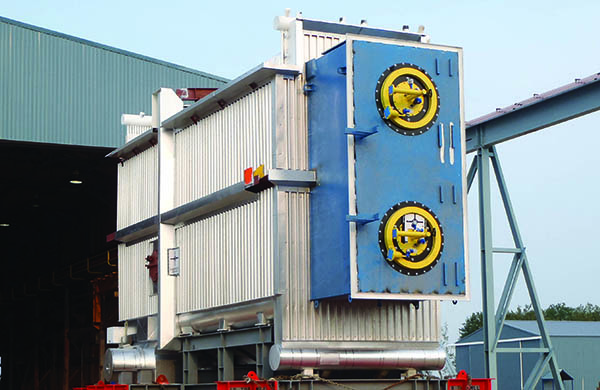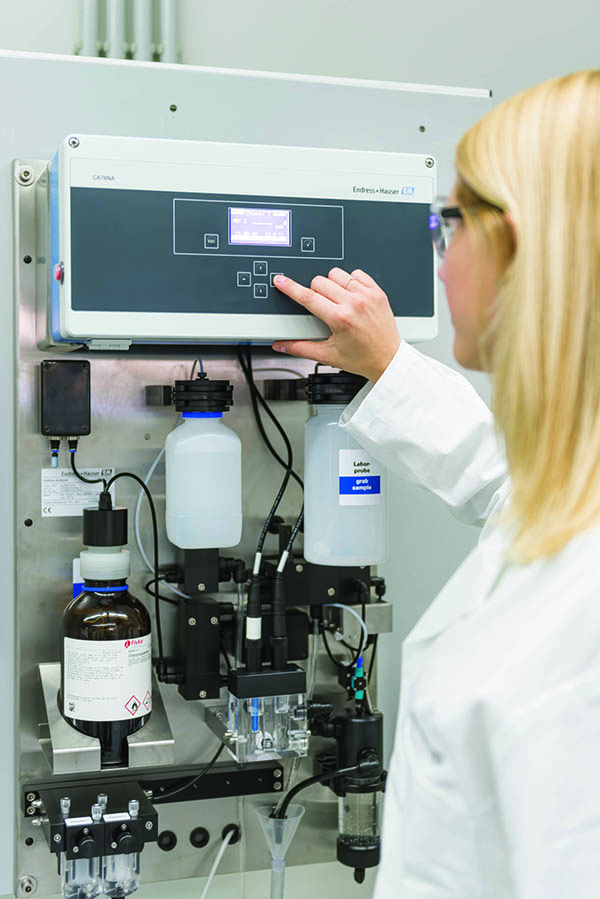Equipment Showcase: Boilers, Burners, Combustion
Credit to Author: POWER| Date: Fri, 01 Nov 2019 05:01:51 +0000
The post Equipment Showcase: Boilers, Burners, Combustion appeared first on POWER Magazine.
Boiler and burner manufacturers, along with suppliers of combustion control systems, work with the power generation sector along with other industries. They provide equipment for low- and high-pressure steam applications, and serve power plants as well as other commercial and industrial sites. A recent analysis from Reports and Data said the global industrial boiler market was valued at $12.8 billion in 2018, and is expected to increase to $20 billion by 2026. Some of the leading manufacturers and service companies for this equipment are featured here.
MEC Optimize from Bosch Opens New Opportunities
 |
1. MEC Optimize predicts the service life of individual components, suggests measures to increase efficiency, and instructs the user in implementing them. Courtesy: Bosch |
When it comes to the digital networking of boiler houses, MEC Optimize from Bosch (Figure 1) opens new opportunities. The digital “efficiency assistant” helps industries achieve extremely high levels of production reliability and reduces energy costs. The digital assistant analyzes and interprets all the important boiler system data. The user receives meaningful information about potential risks of failure, efficiency losses, and wear predictions. The assistant also helps by providing individual recommended actions and helps with planning service and maintenance work. The entire supply of process heat is improved with regard to efficiency, system availability, and emissions. Bosch, Gunzenhausen, Germany
bosch-thermotechnology.com
GE Boilers Operate at High Cycle Efficiencies
 |
2. General Electric’s pulverized coal boiler generates steam for large-scale power plants. The two-pass boilers offer operational flexibility. Courtesy: General Electric |
General Electric’s pulverized coal boiler (Figure 2) is generating steam for today’s large-scale global power projects, working in coal units of up to 1,350 MW at pressure and temperatures that can reach the service limits of contemporary materials. The boiler can operate at high cycle efficiencies at ultrasupercritical conditions, reaching 44% to 47% on a lower heating value (LHV) basis, leading to cleaner operation and lowered fuel consumption. The unit has low primary NO x emissions using advanced tangential firing systems and effective overfire air arrangements, resulting in less reagent consumption and selective catalytic reduction catalyst material. Two-pass boilers have outstanding operational flexibility for temperature control, grid code requirements, sliding pressure capability, and load cycling. The boilers also feature reduced construction time and cost using advanced construction techniques and standard component design and fabrication. General Electric, Atlanta, Georgia
ge.com/power/steam/boilers
B&W Supercritical Boilers Offer Flexibility, Reliability
 |
3. Babcock & Wilcox offers supercritical and ultrasupercritical boiler designs, including package boilers. Courtesy: Babcock & Wilcox |
Babcock & Wilcox’s (B&W’s) supercritical and ultrasupercritical boiler designs offer the flexibility and reliability to meet the most demanding steam generation needs of customers. At supercritical pressures, steam turbine efficiency improves significantly compared to the typical subcritical cycle. Ultrasupercritical steam conditions provide even greater efficiency improvements. B&W also provides higher-capacity package boilers (Figure 3) for both oil and gas firing. These units feature multiple burners for increased capacity. Given the footprint these boilers can be either shop, dock, or field assembled; otherwise, units are shipped by barge or ocean vessel. B&W’s supercritical and ultrasupercritical boilers are designed to take full advantage of variable pressure turbine operation. Specific advantages include lower fuel consumption for a given output, and thus lower carbon emissions than other less-efficient systems. The load change rate capability of the system is not restricted by the turbine. Steam temperature at the inlet and outlet of the reheater is nearly constant over a wide load range. The boiler feedwater pump power is significantly reduced at lower loads. The unit also offers short startup times and higher plant efficiency over the entire load range. Babcock & Wilcox, Barberton, Ohio
babcock.com
Endress+Hauser Launches Boiler Feedwater Analyzers
 |
4. Endress+Hauser’s CA76NA analyzer monitors sodium, which when left unchecked in boiler feedwater can cause corrosion, leaks, and other damage. Courtesy: Endress+Hauser |
Endress+Hauser recently announced the launch of two analyzers for power industry applications: the CA76NA and CA80SI. The CA76NA (Figure 4) monitors sodium, while the CA80SI analyzes for silica in boiler feedwater, steam, condensate, and ion exchangers. Each analyzer can accept up to six sampling inputs. The CA76NA potentiometric analyzer measures the concentration of dissolved sodium ions. An increase in sodium levels in boiler feedwater indicates the presence of unwanted dissolved impurities. This can cause corrosion, leaks, serious damage, and expensive repairs. The analyzer monitors the water/steam circuit in power stations, condensate systems for values indicating ruptures, demineralization systems, steam and cation systems, and mixed bed exchangers. The Liquiline System CA80SI colorimetric analyzer provides precise online analysis of silica to protect plant equipment from deposits to ensure optimum performance of turbines and ion exchangers. Deposits of insoluble silicon dioxide on internal boiler walls, heat exchangers, and turbine blades have an adverse effect on the efficiency of power plants and increase the risk of unplanned downtime and repairs. Endress+Hauser, Greenwood, Indiana ■
endress.com
The post Equipment Showcase: Boilers, Burners, Combustion appeared first on POWER Magazine.